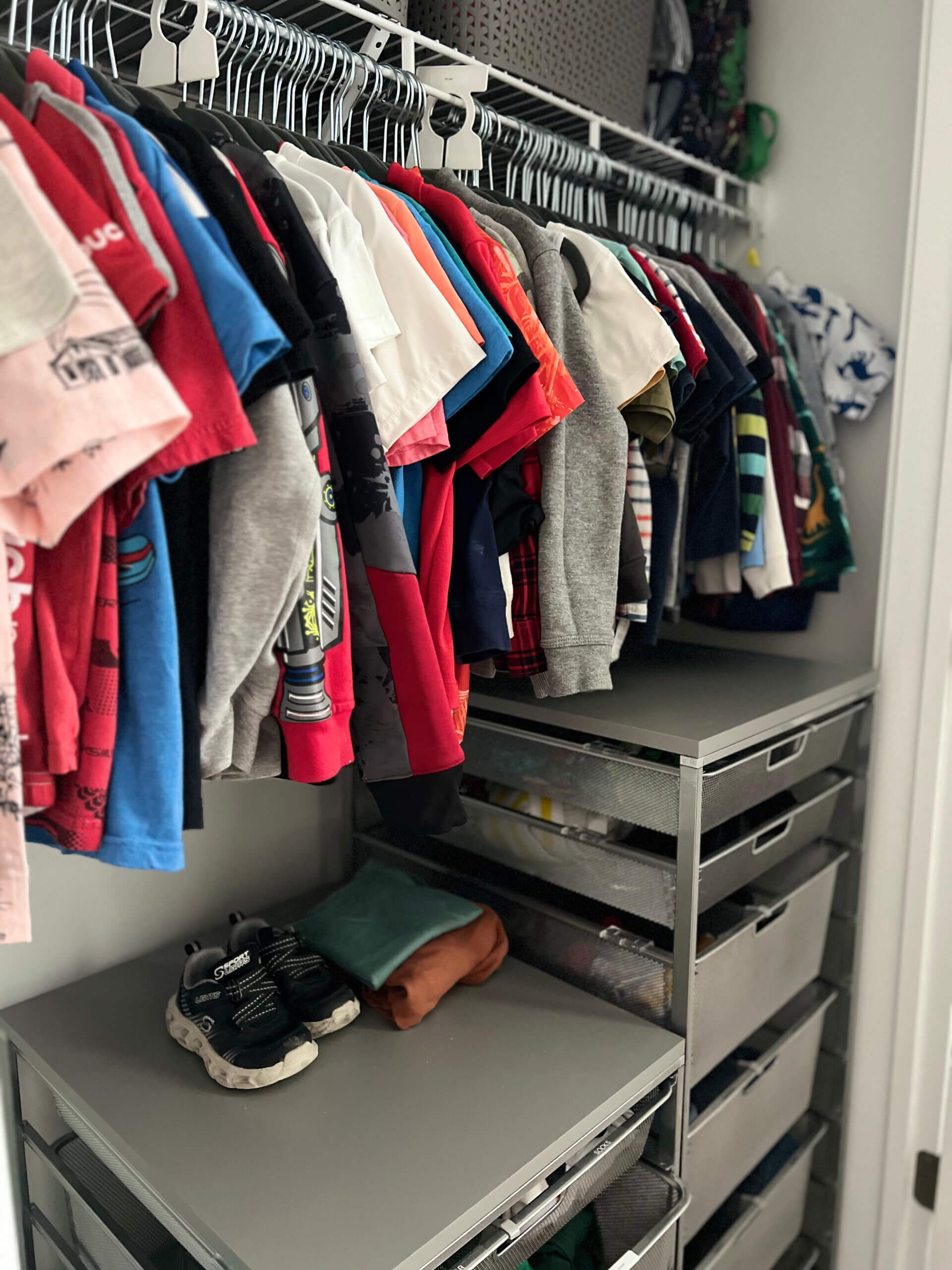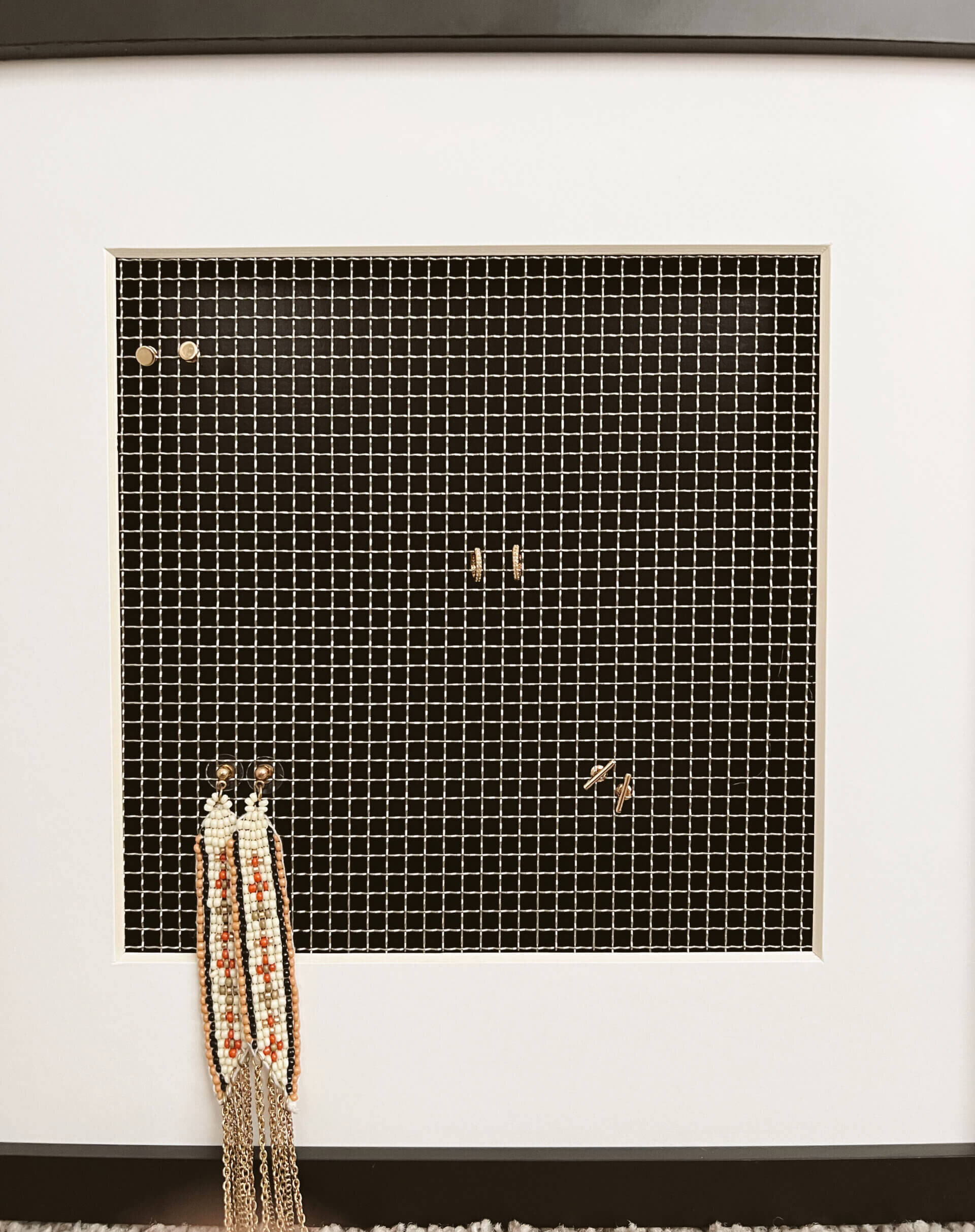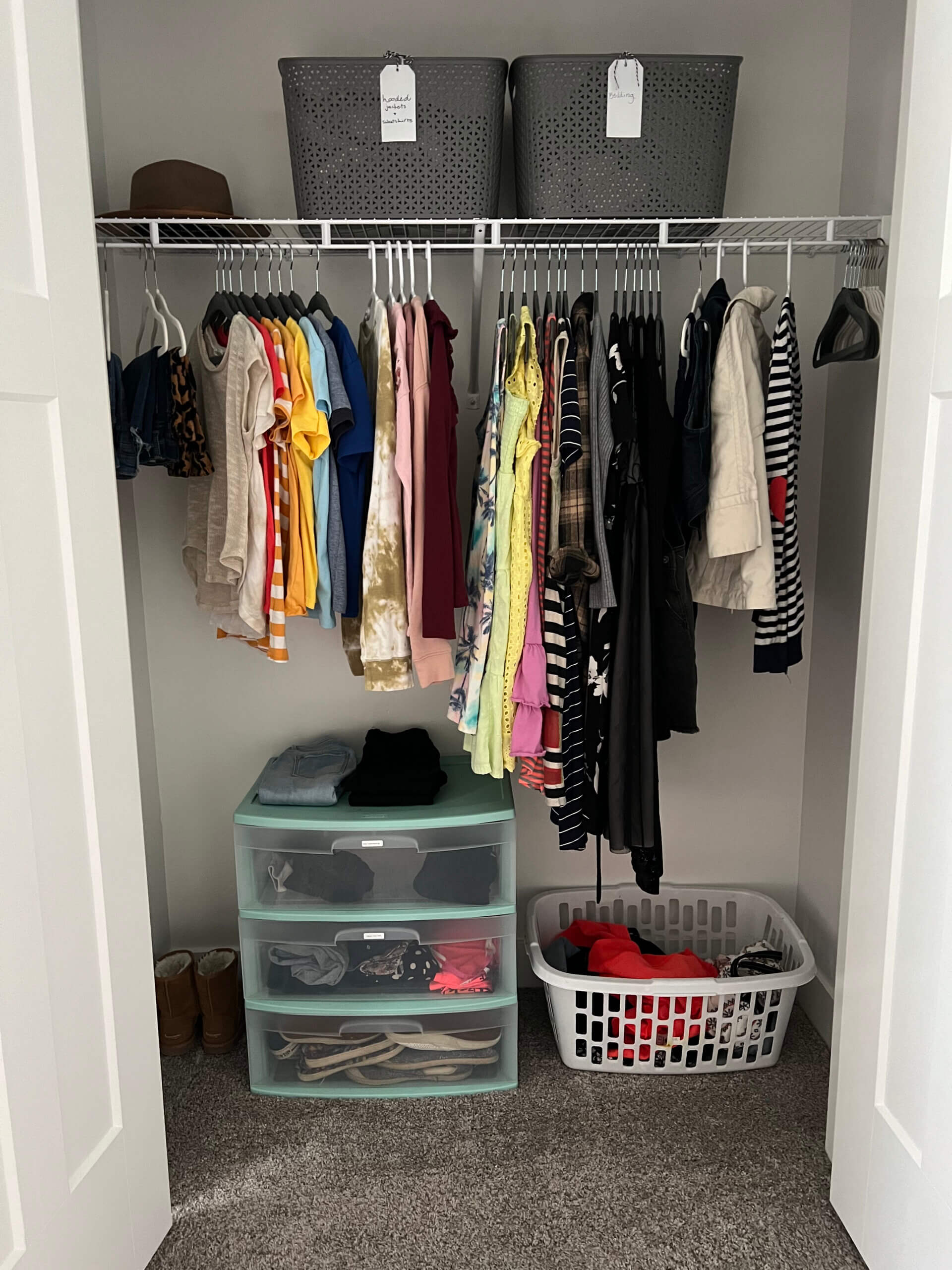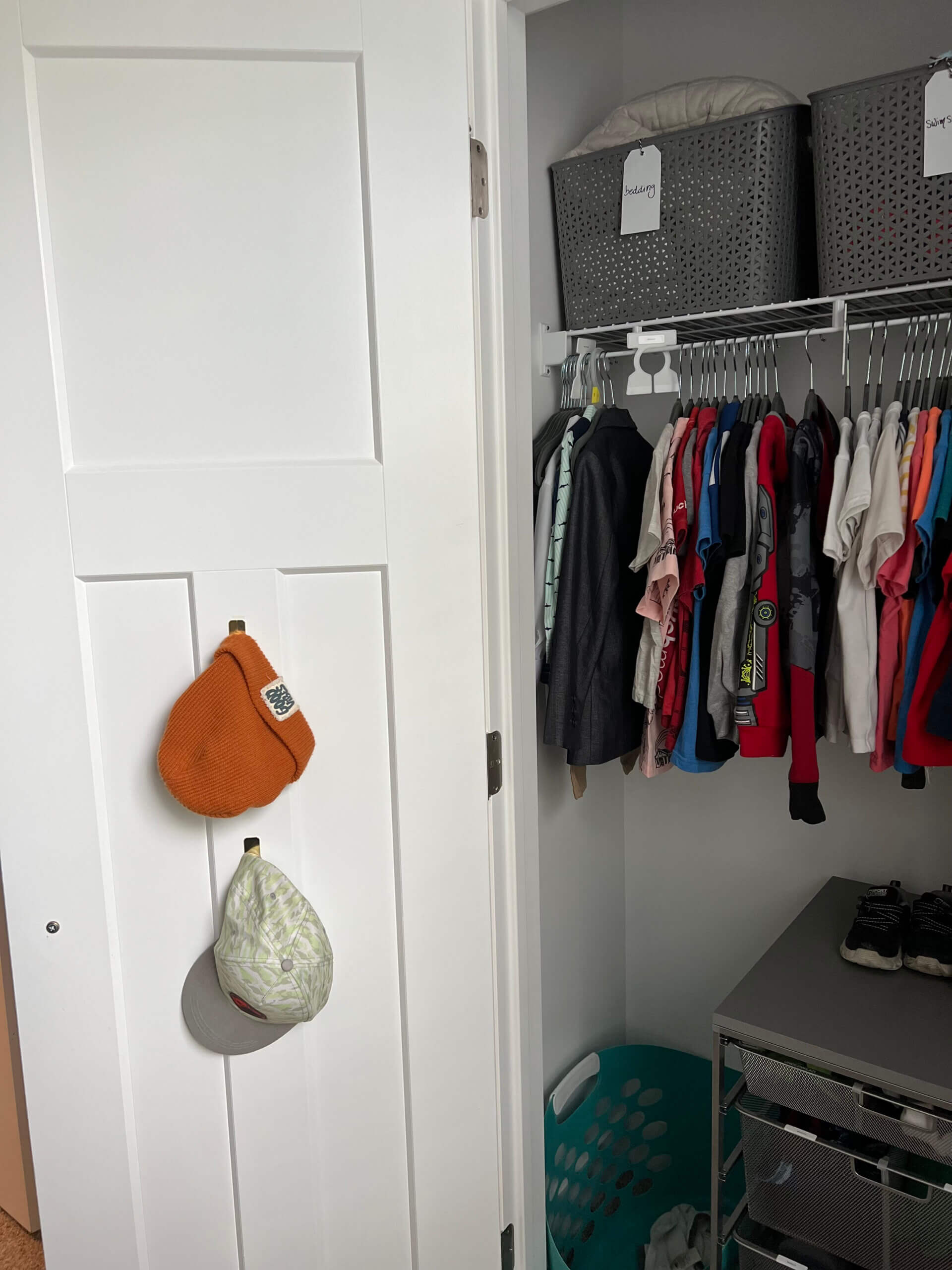
Do you ever feel like you have a closet full of clothes but nothing to wear? Or do you struggle to find the perfect outfit amid a cluttered mess? A clutter-free wardrobe is not only aesthetically pleasing but also functional. Limiting and organizing your closet can impact your daily routine and boost your mood. In this blog post, I‘ll provide tips and tricks to help you achieve a clutter-free wardrobe like a pro. Say goodbye to the stress of a disorganized closet – and hello to a more streamlined and efficient morning routine!
: ASSESSING YOUR CLOSET
Before you start organizing your closet, assess its current state. This means taking a hard look at what’s currently in there. Consider what items you have and whether they’re serving you well. Are there clothes you haven’t worn in years? Are there items that don’t fit quite right anymore? Is there a lot of clutter in your closet?
Once you’ve taken stock of your current situation, you can start thinking about organizing closet ideas. One popular option is to use a closet organizer. Many types of organizers are available, from simple shelves to more complex systems, including drawers and hanging rods. The right organizer for you depends on your space, your needs, and your budget.
Even if you’re on a tight budget, there are closet ideas you can use. One simple trick is to use hangers of the same color and shape. This will give you a more uniform look and help you keep things organized. Another idea is to use shelf dividers to separate your items and make them easier to find.
Whatever organizing closet ideas you choose, the key is to be honest with yourself about what you need and can do without. Don’t be afraid to let go of items no longer serving you.
. . . SHOP MY FAVORITE BUDGET-FRIENDLY ORGANIZING TOOLS . . .
. . .
: CLOTHING CATEGORIES
Once you’ve assessed the contents of your closet, it’s time to start organizing them by category. This is where a closet organizer can come in handy, as they can help you identify the different categories of clothing you have and create designated areas for each. Some categories to consider include:
1. Tops: T-shirts, blouses, button-up shirts, and sweaters all fall into this category.
2. Bottoms: Pants, skirts, shorts, and jeans should be organized together.
3. Dresses: If you have a lot of dresses, consider separating them by style or occasion.
4. Outerwear: Coats, jackets, and other types of outerwear should have their own designated space.
5. Accessories: Hats, scarves, and jewelry should be kept together.
These are just a few ideas, but you can adjust your categories based on your specific wardrobe. The key is to create a system that makes sense for you and that you’ll maintain over time.

: FREQUENCY OF USE
One factor to consider when organizing your closet is the frequency of use for each item of clothing. This can help you determine what should be easily accessible and stored elsewhere.
For example, clothes you wear daily or weekly should be kept in prime real estate within your closet – items you only wear seasonally or for special occasions can be stored in less accessible areas.
Struggling to determine how frequently you wear certain pieces? try implementing the “hanger trick.” Turn all your hangers facing the same direction, and after you wear an item, hang it back up with the hanger facing the opposite direction. After a few months, observe what is still in the original fashion and consider if they’re worth keeping in your closet.
Other ideas for closets to keep frequently used items organized include hanging organizers, shelf dividers, and hooks for easy access. By prioritizing your most worn clothes and organizing them for easy access, you’ll save time getting dressed and maintain a clutter-free closet.
. . . SHOP MY FAVORITE CLOSET ORGANIZING PRODUCTS . . .
. . .

: CONDITION AND FIT
When it comes to organizing your closet, the condition and fit of your clothing are important factors to consider. Clothes that are ripped, stained, or no longer fit well should be removed from your wardrobe. This will free up space in your closet and make it easier for you to find your clothes.
Consider donating or selling items in good condition that no longer serve you. You can also get creative and repurpose clothes that are too big or too small by layering them or using them as loungewear.
If you’re unsure if an item still fits you, try it and assess how it looks and feels. If it doesn’t fit or feel comfortable, it’s time to let it go. Holding onto clothes that don’t make you feel good is detrimental to your confidence and makes getting dressed a stressful experience.
Overall, taking the time to evaluate the condition and fit of your clothing can impact your closet and your daily life. Use these ideas to help create a wardrobe that you love and works for you.
. . . SHOP MY FAVORITE KITCHEN + BATHROOM ORGANIZING PRODUCTS . . .
: THE BENEFITS OF LIMITING AND ORGANIZING YOUR CLOSET
Limiting and organizing your closet has several benefits beyond having a clutter-free wardrobe. Here are some ideas and the benefits you can reap from them:
Saves time and reduces stress: How many times have you stood in front of your closet, overwhelmed by the choices you have to make? A cluttered closet can cause decision fatigue, leading to stress and wasted time. When you limit and organize, you can easily see what you have, and getting ready becomes a breeze.
Maximizes space: A well-organized closet maximizes the space available to you. Organization becomes easier by grouping the clothing categories and folding the items neatly to use all the space. This means you can keep more of your favorites without sacrificing anything.
Saves money: When your closet is organized, you’re less likely to buy items that you don’t need. You can easily see what you already have, and it helps you avoid purchasing similar items or buying something you’ll only wear once. Plus, you’ll be able to take better care of your clothing, meaning it’ll last longer and require fewer replacements.
Helps you define your style: You can better understand your clothing preferences and style. It’ll help you see which items you love and wear most and which aren’t worth keeping. From there, you can create a wardrobe that truly represents your style.

By implementing these ideas for closets, you’ll be well on your way to achieving a clutter-free wardrobe. Assessing your closet, categorizing your clothing, taking stock of frequency of use, and paying attention to the condition and fit of your items will help you determine what to keep, donate, or discard. You’ll find that limiting your closet and organizing it like a pro has benefits, from reducing decision fatigue and increasing your appreciation for your clothing to freeing up space and simplifying your life. So, tackle that closet, and enjoy a more streamlined wardrobe!

